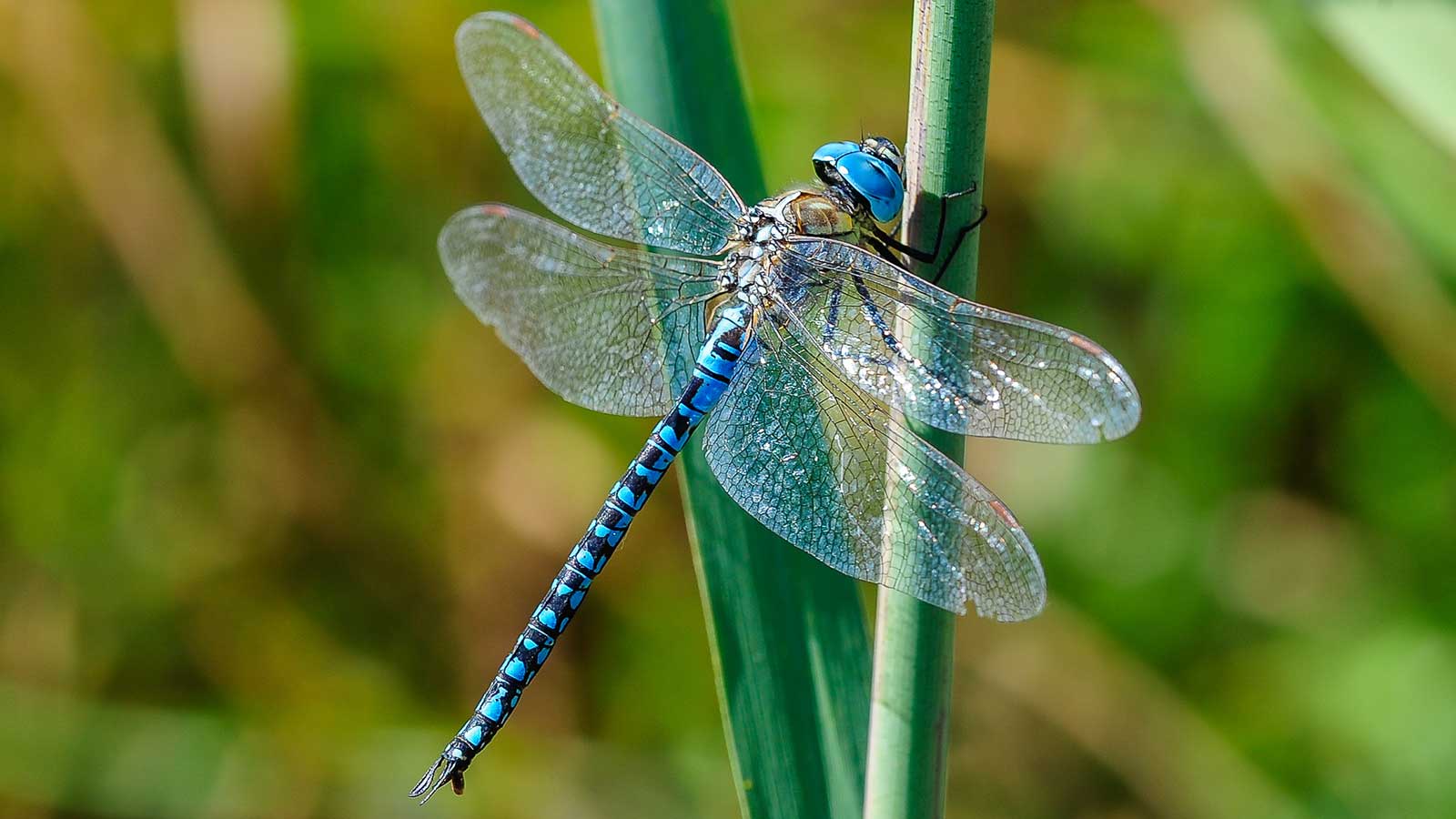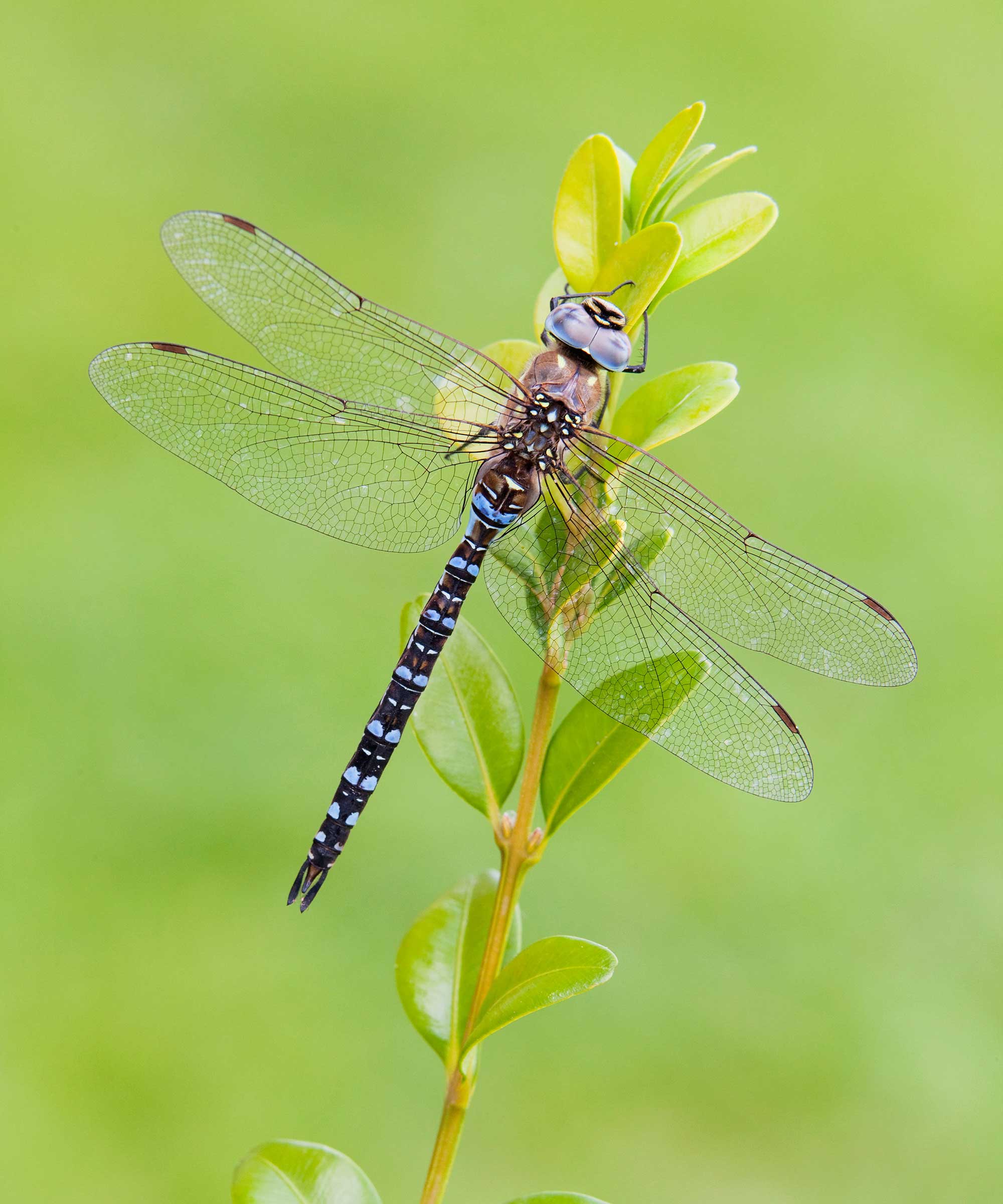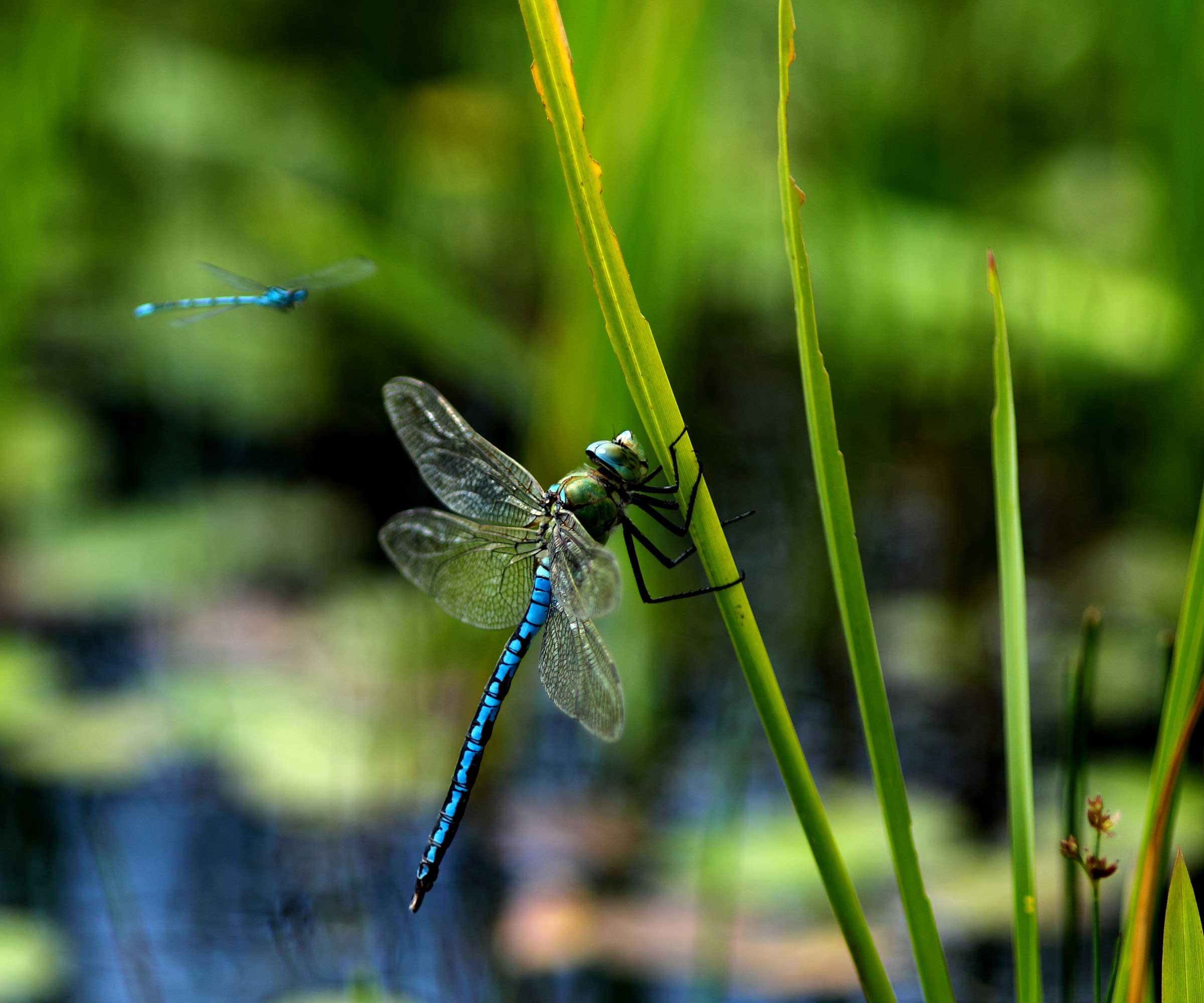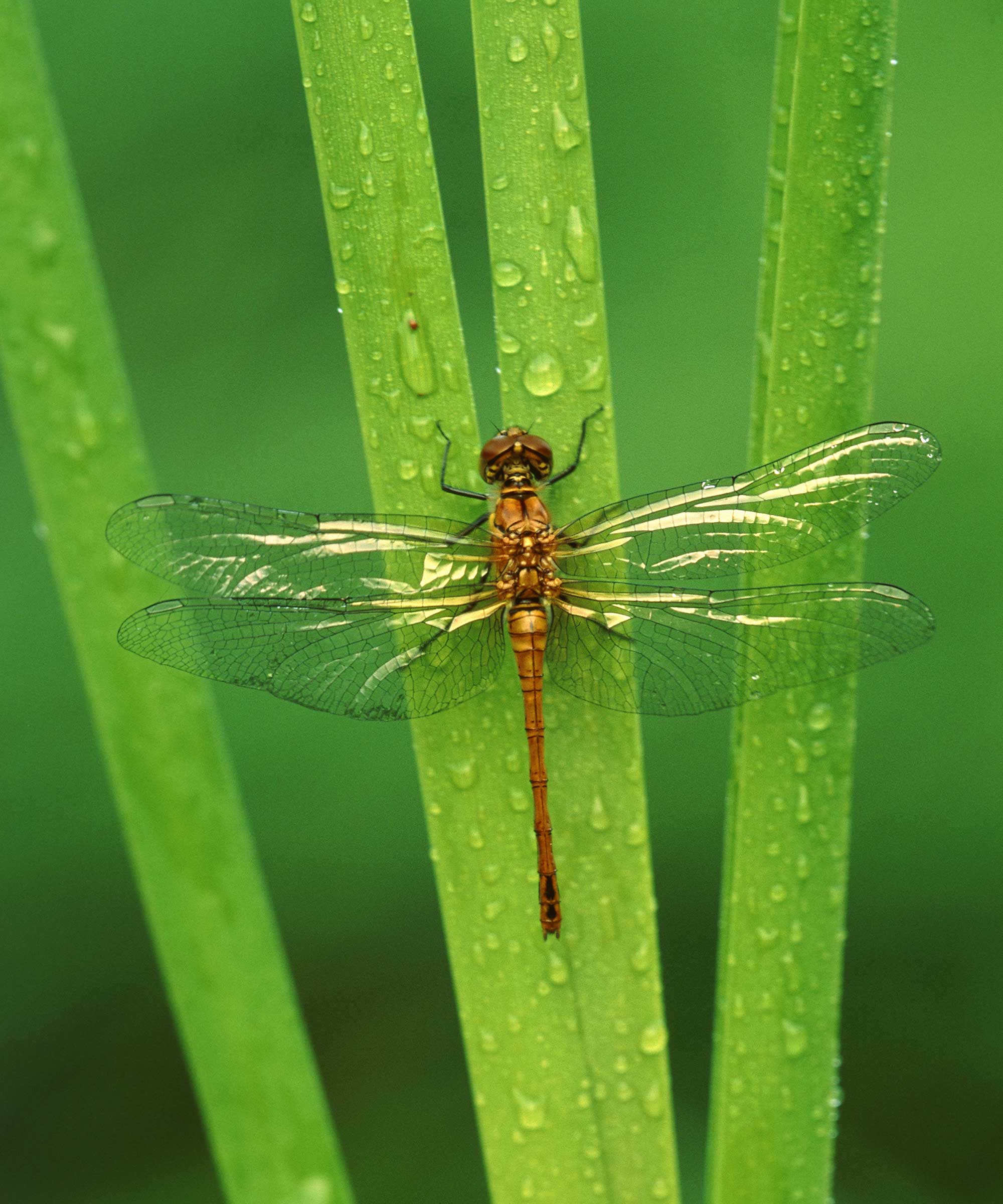How to attract dragonflies – 3 top tips to try in your backyard
Welcome these insects to your outdoor space – not only are they pretty, but they also help with pest control


Q: I love dragonflies and would like to attract them to my yard. Do you have any advice on how to do so?
A: There are a few ways to make a yard more wildlife-friendly so that it appeals to these winged wonders. Their beauty isn't the only benefit they'll bring to your space – they also provide a natural means to keep pests under control.
'They are voracious predators, especially as larvae living underwater,' says Lindsey Chastain of The Waddle and Cluck blog. 'A single dragonfly can consume hundreds of mosquitoes, midges, and other small insects per day. With just a small pond, our property is almost completely free from mosquitoes. I haven't been bitten by a mosquito all summer!'

Lindsey started gardening in 2005, when her first son was born, as a way to save money. It started with a small window herb garden, then expanded to potted vegetables, and now, she and her husband can regularly be spotted in the garden on their homestead.

Dragonflies are great at keeping mosquitoes at bay
3 steps to welcome more dragonflies to your yard
Try these expert tips at home. They will help to attract dragonflies, while adding extra sensory appeal to your space.
1. Install a water feature
'Dragonflies are aquatic insects, so having a pond or other water feature in your garden will make them feel right at home,' says stylist Lisa Fontanarosa, adding that her own garden pond attracts many.
A depth of two feet with gently sloping sides to create warm, shallow areas is ideal. Avoid adding fish, as they can eat the dragonfly larvae.
If you don't have space for a pond, a fountain or bird bath can also create a dragonfly magnet, says Lindsey. Plus, they're great for attracting other wildlife.

Lisa is a stylist, gardener, floral creator, and creative consultant who has traveled all over the world working with A-list style makers and collecting beautiful objects for her shop and home. She creates luxurious spaces for private clients and works with designers who create custom pieces for some of the biggest names in the business, including Bergdorf Goodman, Barneys, Colette, and Bon Marche.

Dragonflies lay their eggs in water
2. Add plants in and around your water feature
Add aquatic plants to your pond, such as water lilies and cattails, suggests Roberto Benardout, Founder of Nature Roamer. A blend of floating and submerged vegetation is best. These plants will provide suitable locations for dragonflies to lay eggs, as well as essential spots to perch, roost, and seek shelter, he says.
Design expertise in your inbox – from inspiring decorating ideas and beautiful celebrity homes to practical gardening advice and shopping round-ups.
Lindsey also recommends planting native flowers around the water, such as bee balm and black-eyed Susans (which will attract bees and butterflies, too). 'Bee's Knees' bee balm from Burpee is a vibrant, mildew-resistant variety.
Ornamental grasses also work well around a pond and add easy-care structure.
3. Hold back on the pesticides
Using pesticides and herbicides that may harm dragonflies and other wildlife must be avoided, as Lindsey highlights – as should installing any 'bug zappers' as a way to get rid of mosquitoes.
Luckily, there are many alternative, organic gardening methods to tackle interlopers and keep your yard in top condition. These include using beneficial nematodes as a pest control and pulling weeds by hand.

Pesticides can be harmful to these creatures
FAQs
Do dragonflies bite?
Although dragonflies aren't able to sting you (unlike wasps) they do have teeth – which means they can bite. However, according to Healthline, dragonflies will only do this out of self defense. This bite isn't dangerous though, they add, and is unlikely to break the skin.
Are dragonflies pollinators?
No, unlike bees and butterflies, dragonflies are not pollinators.
Dragonflies usually appear throughout summer into fall (with some species migrating to hotter climes when temperatures drop). So, keep an eye out for these visitors once the warmer weather returns. And, when they do, ensure you've got a comfy outdoor seating solution ready for taking in the view of their spectacular, high-speed show.

Holly started writing about gardening five years ago, and she is a regular contributor to Homes & Gardens. She has also written many gardening features for Woman & Home and Real Homes, too. She has previous experience as a professional gardener, where she helped to plant and maintain private gardens. Holly has also looked after allotment plots over the years and loves to grow her own flowers and veggies from seed. In her spare time, she enjoys visiting local gardens, botanical drawing, and tending to her ever-growing collection of houseplants.